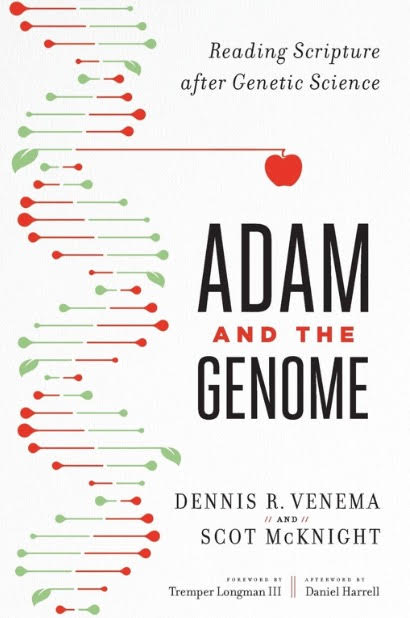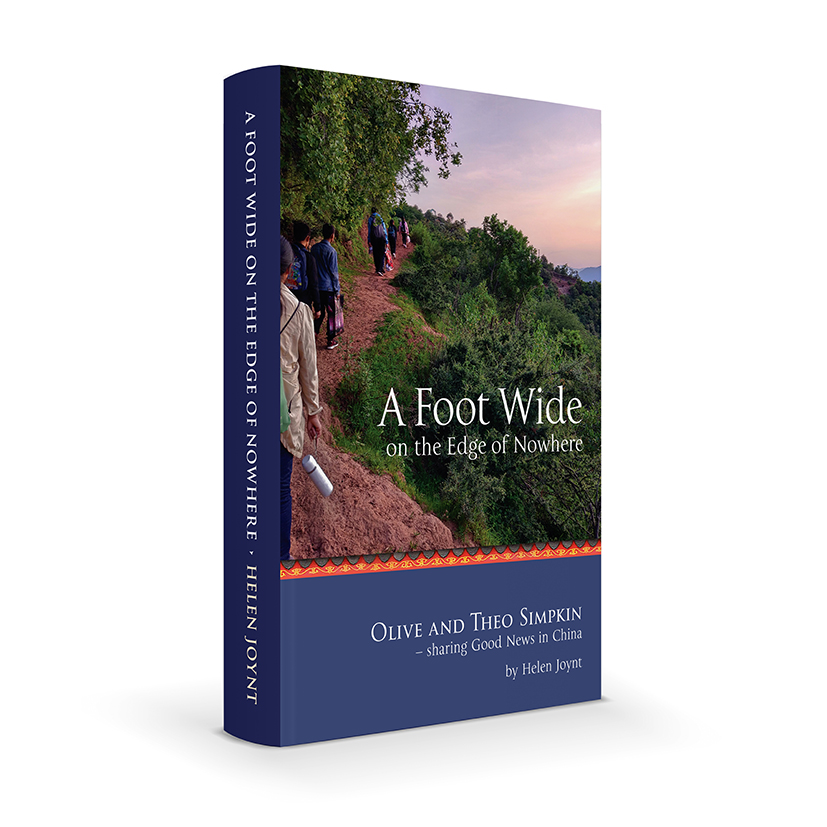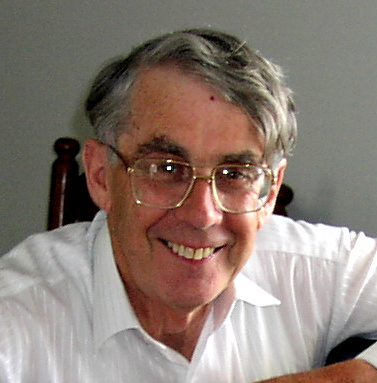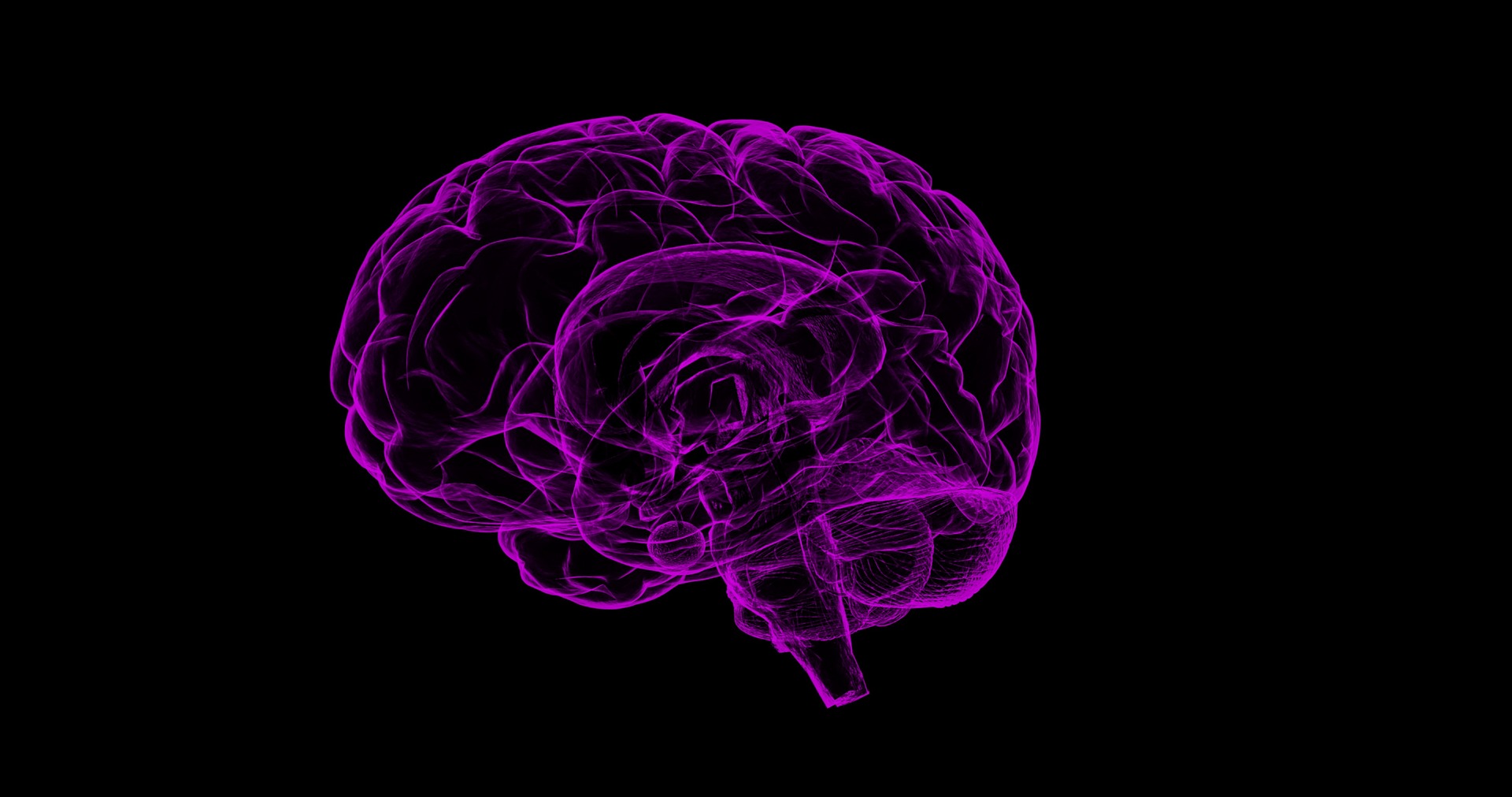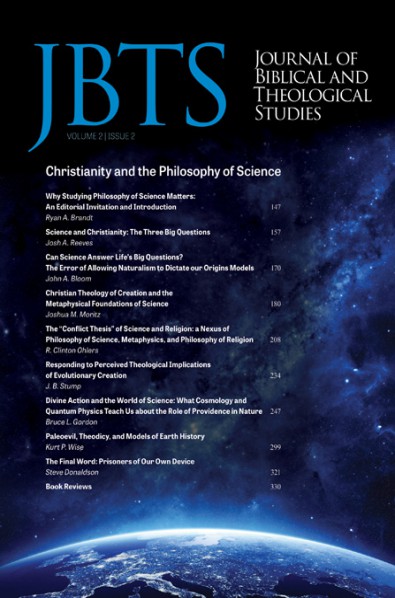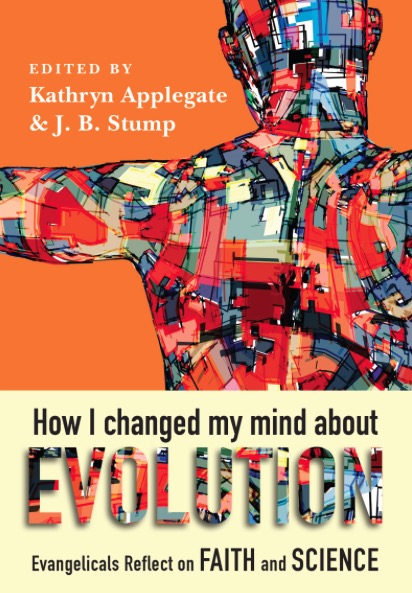


God’s Statistical Universe
Robert J Stening, September 2006
God’s Statistical Universe
Robert J Stening
Dr Stening is a Senior Research Fellow in the School of Physics, University of New South Wales.
This is the paper from a talk given by Dr Robert J Stening at the Science and Theology Consultation in Canberra on 29 March 2006 and subsequently at an ISCAST meeting at the School of Physics at the University of NSW on May 1, 2006.
Abstract
The universe is not completely predictable, but contains many uncertain events, which follow statistical laws. The whole evolutionary process is driven by statistics. Haught’s ‘process theology’, is discussed, in which the future is uncertain, even to God, but offers promise. Two common attitudes, of blind trust in God, and the earth as a ‘soul school’, are examined and found to be common in popular Christian literature. The existence of uncertainty is seen as a prerequisite for the exercise of faith as God requires. Some ideas are advanced of how evangelicals and process theologians might learn from each other.
Keywords
Statistical universe, uncertainty, kenosis, process theology, providence as promise.
While some people may think of the Universe as an assembly of billiard ball-like particles, following Newton’s laws of motion, it soon becomes apparent that nature is full of random events following the laws of statistics. The random clicks from a Geiger counter vividly demonstrate this, whether the counter is receiving randomly timed decays from a radioactive substance or cosmic rays from space. Later one learns that there is uncertainty at the most basic level of measurement in physics, as expressed by Heisenberg’s uncertainty principle which states ‘It is impossible to measure simultaneously and precisely both the position and the momentum of a particle’. There is a similar relation between the energy state of a particle and the time of measurement (Arya 1974).
This uncertainty also permeates the biological world where genetic mutations and irregularities occur in an unpredictable fashion but with certain expected probabilities. And these uncertainties dramatically affect people’s lives, often leading them to question God’s ‘plan’ for their life, but
also leading them to accept events as part of God’s plan because such events will occur statistically in the universe as God has made it. This impacted my own life when our son was born with Down Syndrome. I was aware that this occurred with a certain statistical probability (2–3% of pregnancies in mothers in their early twenties, rising to 35% when they are in their mid-forties) and so this was just part of the roll of God’s dice (National Down Syndrome Society, www.ndss.org). This knowledge helped our attitude to the event, to accept it as part of God’s dealing with our family. Then two weeks after my official retirement from the University I was diagnosed with chronic myeloid leukaemia. This has an incidence of about 1.5 per 100,000 people per year (Leukaemia Research, www.lrf.org.uk). But again it is usually not possible to point to any particular cause—it just has a certain statistical occurrence.
We now believe that the whole evolutionary process in nature is driven by statistics, theistic evolution seeing this as the way that God has brought us to where we are today.
Haught’s Boyle Lecture
The publication of Professor John Haught’s 2003 Boyle Lecture entitled ‘Darwin, design and the promise of nature’ (Haught 2005a) provides a setting for the consideration of various views on why God may have created a universe full of uncertainty and, in particular, why God might have chosen evolution as a method of creation and how this might be reconciled with divine providence.
Haught identifies three main features of evolution:
-
Contingent events—these are unpredictable random occurrences such as genetic mutations or cosmic events such as meteor impacts on the earth, both of which would influence the progress of evolution.
-
Lawful constraints—the basic laws of physics and chemistry and also the law of natural selection which limit evolutionary pathways.
-
Deep cosmic time—the billions of years over which these processes operate.
On the other hand the idea of divine providence suggests that God is not only interested in the progress of the human race but he also has concern for each individual as a father looks after his children. The former idea might suggest that God intervenes to direct evolution at various stages but Haught agrees here with Dawkins that:
the vast amount of time in which change can occur randomly … eliminates the need for ad hoc interventions by supernatural engineering.
(Dawkins 1996)
While personal experiences of suffering and disaster often lead people to question how God might be in control of the circumstances of their lives.
Haught dismisses two popular responses to these dilemmas and then suggests his own way through.
Blind Trust
The first popular response is that of Blind Trust in God, this in the face of apparent absurdity. God’s purposes and ways are unfathomable to us mortal humans and we should accept that.
Our group recently completed a series of studies on the book of Ecclesiastes. The writer of the notes we used consistently pushed the idea that there are things in the universe which we will never understand (McMahon 2001). As a scientist I reacted badly to this idea at first: the scientist feels that all things are open to his or her investigation and that the truth of the way of things is out there to be discovered. But by the end of the study I was forced to agree that we will never have a full understanding:
No-one can comprehend what goes on under the sun. Despite all his efforts to search it out, man cannot discover its meaning. Even if a wise man claims he knows, he cannot really comprehend it.
(Ecclesiastes 8:17 NIV).
Simon Conway Morris, in his response to Haught’s lecture, presents a similar view
That there might be no limit to the complexities of the world we inhabit might not only refresh our wonder at Creation, but would inevitably shift our theodicy. At one level it would be an invitation to continuous growth and understanding. But it would also be a salutary reminder that God is ultimately unknowable, and that for all our strutting certainties they are but so many pieces of straw.
Berry (Berry 2005) quotes JBS Haldane:
(Morris 2005 p. 24)
My suspicion is that the universe is not only queerer than we suppose, but queerer than we can suppose.
(Haldane 1927 p. 208)
What we see is like the tangled mess on the underside of a tapestry—only on the right side can God’s perfect plan be seen. Indeed a person with full intellectual confidence that he understands the universe might be prevented from exercising that faith which is demanded by so many biblical passages (Haught 2005a). More of this later. But Haught laments that such a view ‘…can at best tolerate, it can never celebrate evolution…’ He goes on to expostulate that we should not be too quick to give up on the task of understanding at the same time the evolutionary processes seen in nature and the revelation of God’s person and plan found in scripture (Haught 2005b).
Helm (Helm 2005) responds that our faith is not blind. Our faith is instructed by the whole biblical story and we trust God because of what he did for us in Jesus.
Earth is a ‘soul school’
The second stance on these questions is what Haught calls ‘Darwinian Pedagogy’. The earth is a ‘soul school’ for humans. The idea of God disciplining his children appears in Hebrews 12:5–13 and elsewhere such as:
…but we also rejoice in our sufferings, because we know that suffering produces perseverance; perseverance, character; and character, hope.
(Romans 5:3–4 NIV)
Haught objects that this might engender ‘resentment and even hatred of God for making the world so unnecessarily severe’. And he points out that all that goes on in nature is then assumed to be merely part of God’s device to train his human creation. But evangelicals do maintain this anthropocentric emphasis, quoting from the Psalms:
…what is man that you are mindful of him, the son of man that you care for him? You made him a little lower than the heavenly beings and crowned him with glory and honour.
(Psalm 8:4–5 NIV)
Haught first notes the ideas of Teilhard de Chardin, that the evolution of the universe from simplicity to complexity, including consciousness, is evidence of God’s providential care. The suffering accompanying evolution is a consequence of the incompleteness of the present universe—it is necessarily incomplete, because a complete, perfect universe would be indistinguishable from its creator.
Haught also notes with approval Whitehead’s suggestion that God has designed the universe so that it evolves to maximise beauty, progressing at its own pace, again constrained only by God’s providential care.
Haught’s own theory comprises two elements—the descent of God or his kenosis in taking human form as per Philippians 2:5–11, and the future fulfilment of God’s promises.
The kenosis of God envisaged by Haught is consistent with process theology whereby God is constrained by events within the universe. This clashes with the evangelical view of an almighty and sovereign God, who can choose to listen to the pleas of his beloved children but is not constrained to do so. Haught writes that:
God is essentially humble, self-emptying love that gives itself away unreservedly to the entirety of creation for the sake of gathering that creation into the divine life…
(Haught, 2005a, p. 16)
and that his kenosis is:
all for the sake of deeper intimacy with the created world.
(Haught 2005a, p. 16)
Quoting Donald Dawe he says, ‘The Creator had come under the power of his creation’ (Dawe 1963).
For me this kenosis goes too far. While God in Christ did indeed endure the limitations of a human body and life, God the Father in heaven still reigned supreme. He could at any time have sent an army of angels to rescue his Son but he chose not to do so.
One aspect of kenosis is that, in creating the universe, God allows the existence of something other than himself and desires a relationship to this other. Paradoxically, Haught points out, this very ‘humbling’ act of God enlarges his greatness. Part of the difficulty in understanding Haught’s viewpoint is that he uses the same language to describe God’s relationship with the natural world as that which is usually confined to personal relationships. For example:
Creation is God’s ‘letting be’ of the world, a release that makes possible a dialogical relationship (and hence a more intimate communion) of God with the finite, created ‘other’.
(Haught 2005a, p. 18)
One can agree with this statement with respect to people but it is hard to include such things as rocks, grass or tables. As Jacob Wolf says:
Concepts such as ‘freedom’ and ‘autonomy’ only make sense when used in relation to creatures in possession of consciousness.
Haught applies his three features of evolution in this context:
(Wolf 2005)
-
Some contingency or uncertainty is necessary to ensure the autonomy of God’s creation. There is no ‘life’ in creation if all events are determined.
-
The invariance of the physical laws, including natural selection, is also necessary to preserve creation’s autonomy. The implication is that God is not free to alter these laws. For some this throws up the whole question of miracles while others will conjecture that miracles are subject to further, as yet unknown, laws.
-
Time is required for nature to evolve into the many possibilities allowed by the structure of the world set up by God.
The question remains as to whether humanity has arisen purely by chance or whether, as Arthur Peacocke has suggested (as cited in Wikipedia, Peacocke 2006), the dice are loaded towards the evolution of complexity and conscious beings. Similarly Richard Colling speaks (Colling 2004) of
‘random design’ — the very random processes existent in the universe are part of God’s design leading inevitably to the appearance of the human race. Indeed he speculates that this random design may be the only possible mechanism which could lead to the appearance of life. Simon Conway Morris has a similar view which he presents in his book Life’s solution: inevitable humans in a lonely universe (Morris 2003). As Ian Barbour points out, this contrasts with Stephen Jay Gould who would say:
If the tape of evolution were to be replayed on Earth—or on another planet—the outcome would not at all resemble the forms of life with which we are familiar.
(Barbour 2005)
The second element of Haught’s theory he refers to as ‘Providence as Promise’. The very existence of the passage of time in the physical universe implies a ‘coming of the future’, a future which we view with hope based on God’s promises but a future as yet full of uncertainty due to the statistical nature of the universe. God created a universe in which time passes in one direction and this is necessary for evolution to take place. Haught suggests that the promissory nature of the future also explains the other two elements of evolution. In process theology the future is unknown, even to God, and so there must be some uncertainty in the processes which carry us into the future. Likewise the laws of nature must be invariable otherwise connection would be lost between the present and the future. Haught says:
…God takes every event in time, and that includes every event in the story of nature, into the expansive beauty of the everlasting divine life.
(Haught, 2005b p. 68)
And so he shows his appreciation of panentheism. These ideas meld into one of the two forms of immortality provided by process theology (Barbour 1990)—that of objective immortality, in which our lives are preserved everlastingly in God’s experience, though this seems to me to be like being swallowed up in some kind of theistic nirvana. The second form, subjective immortality, is closer to evangelical thought in that it places humans in a new environment (heaven?) but in which change continues rather than a place where ‘time will be no more’.
A universe which invites faith
The scientist has observed the statistical character of the universe. The theologian asks the question ‘Why did God make the universe with this property?’. If we imagine a universe bereft of random processes, the scientist ultimately would be able to predict the future with precision.
There would be no uncertainty about the future and there would be nothing that a person could do to change the future: free will would be lost. The universe would inevitably roll on to the future, entirely prescribed by the initial conditions. There would be no casinos, horse races, football matches or stock market.
But God has not, thankfully, created the world in this way. His world is much more interesting. But also its very random nature requires a response from us. And it is this response that God is looking for. It is a response of faith. The idea that God wants his created people to turn to him in faith is maybe the most pre-eminent biblical message. Adam failed to trust God but listened to the serpent. While in contrast:
Abram believed the Lord, and he credited it to him as righteousness.
(Genesis 15:6 NIV)
If the universe did not challenge us with sufferings, trials and uncertainties, there would be no place to exercise faith. While we might question God as to why he has allowed some terrible thing to happen, he is looking for Job’s response: ‘Though he slay me, yet will I hope in him’ (Job 13:15 NIV).
‘Popular’ Christian books
By and large popular Christian books will adopt a mixture of the ‘blind faith’ idea and the ‘soul school’. But they are written by people who often have endured severe suffering and have found a way to walk victoriously through it, learning from their experience.
I shall use Bishop Frank Retief as an example (Retief 1994). His church in Capetown was invaded by a group of armed men who threw hand grenades attached to tins of nails into the midst of the congregation. 11 people died and 55 were injured. Retief emphasises that trials test our faith. Without trials a person cannot know whether their faith is true or merely intellectual assent. Retief writes:
In the aftermath of our tragedy we found the evidence of true faith overwhelming. The thing that struck me is that true faith in Christ, as opposed to that which is false, has a ring of truth about it. It is not acted out. Rather it is a spontaneous response of the heart. The humble heart-warming response of so many of our church members during those days brought tears to my eyes.
And Retief also urges us to have faith in God, trusting him because of what we know and in spite of what we don’t know:
Far better to acknowledge humbly that there are times when His ways are hidden from us and that we do not understand all things. We know that God is good and therefore we must come to the place where we cast ourselves unreservedly on the attributes of His character. We take comfort from what we know about Him. And what we know about Him is so great and glorious that we can confidently trust what we do not know about Him.
Moral uncertainty
(Retief 1994)
There is another kind of uncertainty which we discover at the heart of our being. Moment by moment we make choices. Some of these choices may be prompted by the Holy Spirit and we do right while others may be
temptations of the devil and we sin. Even though we may have inside us a general desire to do the right things, we know that often we fail to do so. Paul described this in his own experience:
For the good I wish, I do not do; but I practise the very evil I do not wish.
(Romans 7:19)
And, the next time when we have a choice between the right path and the wrong path, we cannot at this moment be certain which we will choose.
This process is mysterious indeed and presumably linked to what goes on in our brains. The smallest thought can tip us from one course of action to another. But if we place our faith in God, he promises little victories (obtained with the help of his power, Romans 1:16) in our daily decision- making as we ‘walk in the Spirit’.
Learning from each other
Although the gulf between evangelicals and the process theologians is fairly wide, we should seek to learn from each other and understand each other better.
Some of these ideas are from John Wilson (Wilson 2000).
-
Evangelicals seem to dwell on a rather static state of affairs in the universe, waiting for Jesus’ return and the inauguration of the new heavens and the new earth. Process theologians, such as Haught, look at the universe unfolding in time as an adventure, a search for more novelty and beauty. This viewpoint must be more in tune with the attitude of the scientist.
-
There is a difference in the attitude to scripture and reason. Evangelicals see the scriptures as containing God’s revelation of himself to humanity but are often trapped in ancient doctrines which are difficult to reconcile with modern science. Haught laments that some are content to cling to these doctrines, seen as biblical, and are unwilling to confront the problems. Maybe evangelicals need to try harder for resolution of difficulties while remaining faithful to the supremacy of revelation.
-
The process theologians quote scripture to suit their ideas but often give it a different meaning to that generally accepted.
-
Each side needs to be careful in the way they understand the other. In the exchange in Science and Christian Belief, Berry (Berry 2005) upsets Haught by his dismissal of Teilhard de Chardin and his ideas and Haught (Haught 2005b), probably rightly, accuses Berry of failing to appreciate these ideas properly. But then Haught misunderstands Berry when he talks about Berry’s idea of transcendence as God being separate from the world. Evangelicals see God as transcendent and immanent at the same time. They see God more separate than
panentheism suggests, but just as intimately connected and sustaining every particle in the universe.
-
Evangelicals are used to holding together apparently discordant beliefs, recognising the truth of each but admitting they are unable to fully reconcile them. Examples are that Jesus is perfectly God and perfectly man, God is sovereign and we have free will, God is transcendent and immanent, God is outside of time and inside time.
It is true that we don’t understand all this, but God calls us to:
Trust in the Lord with all your heart, and lean not on your own understanding.
(Proverbs 3:5 NIV)
References
Arya, AP 1974, Elementary modern physics, Addison-Wesley, Reading, Mass.
Barbour, IG 2005, ‘Evolution and process thought’, Theology and Science, vol. 3, pp. 161- 178.
Barbour, I 1990, Religion in an age of science, SCM Press, London.
Berry, RJ 2005, ‘The lions seek their prey from God: a commentary on the Boyle Lecture’,
Science and Christian Belief, vol 17(1), pp. 41–56.
Colling, R 2004, Random Designer: created from chaos to connect with the Creator, Browning Press, Bourbonnais, IL.
Dawe, D 1963, The form of a servant, The Westminster Press, Philadelphia. Dawkins, R 1996, Climbing Mount Improbable, W.W. Norton & Co., New York Haldane, JBS 1927, Possible worlds, Chatto & Windus, London.
Haught, JF 2005a, ‘The Boyle Lecture 2003: Darwin, design and the promise of nature’,
Science and Christian Belief, vol. 17(1), pp. 5–20.
Haught, JF 2005b, ‘True union differentiates: a response to my critics’, Science and Christian Belief, vol. 17(1), pp. 57–70.
Helm, P 2005, ‘Reflections on the Boyle Lecture’, Science and Christian Belief, vol. 17(1), pp. 35–40.
McMahon, T 2001, The search for meaning, Matthias Media, Sydney.
Morris, SC 2003, Life’s solution: inevitable humans in a lonely universe, Cambridge University Press, UK.
Morris, SC 2005, ‘A response to the Boyle Lecture’, Science and Christian Belief, vol. 17(1), pp. 21–24, 2005.
Peacocke, A 2006, Authur Peacocke , Wikipedia, viewed September 2006, http://en.wikipedia.org/wiki/Arthur_Peacocke.
Retief, F 1994, Tragedy to triumph, Nelson Word, Milton Keynes.
Wolf, J 2005, A critique of ‘Theistic Evolution’ as a supplementary model of the relationship between Darwinian theory and religion, Metanexus: the online forum on Religion and Science, viewed September 2006, http://www.metanexus.net/metanexus_online/show_article2.asp?id=9224
Wilson, J 2000, ‘Your Darwin is too large’, Christianity Today, vol. 44(6), p. 52.
